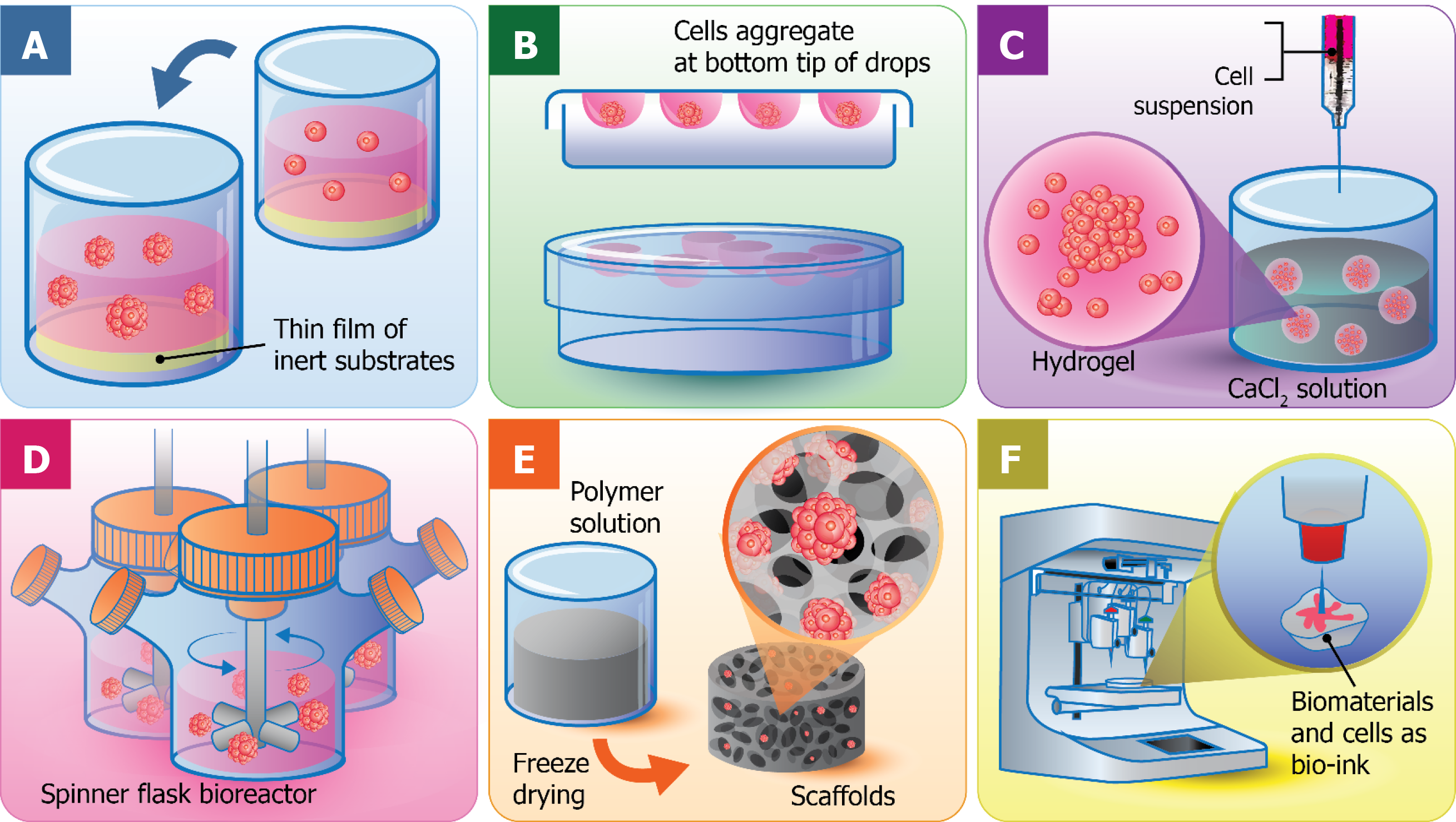Copyright
©The Author(s) 2019.
World J Stem Cells. Dec 26, 2019; 11(12): 1065-1083
Published online Dec 26, 2019. doi: 10.4252/wjsc.v11.i12.1065
Published online Dec 26, 2019. doi: 10.4252/wjsc.v11.i12.1065
Figure 1 Schematic diagrams of the traditional two-dimensional monolayer cell culture and three-dimensional cell culture systems.
A: Traditional two-dimensional monolayer cell culture; B: Three-dimensional cell culture systems; C: The structure of three-dimensional spheroid with different zones of cells with the models of oxygenation, nutrition, and CO2 removal. Three-dimensional spheroid from inside to outside. The regions are necrotic zone (innermost), quiescent viable cell zone (middle), and proliferating zone (outermost).
Figure 2 Different techniques used for three-dimensional cell cultures.
These techniques include: A: Liquid overlay; B: Hanging drop; C: Hydrogel embedding; D: Spinner flask bioreactor; E: Scaffold; F: Three-dimensional bioprinting.
Figure 3 Potential applications of three-dimensional cell culture systems.
The invention of three-dimensional cell culture systems could be applied into various aspects, for instance anticancer drug screening, tissue engineering, cancer biology, and clinical uses.
- Citation: Chaicharoenaudomrung N, Kunhorm P, Noisa P. Three-dimensional cell culture systems as an in vitro platform for cancer and stem cell modeling. World J Stem Cells 2019; 11(12): 1065-1083
- URL: https://www.wjgnet.com/1948-0210/full/v11/i12/1065.htm
- DOI: https://dx.doi.org/10.4252/wjsc.v11.i12.1065











